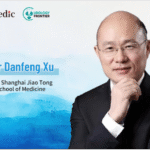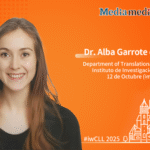
Editor’s Note:The 54th Annual Scientific Meeting of the International Society for Experimental Hematology (ISEH 2025) was held from September 24–27, 2025, in Kumamoto, Japan, bringing together leading global experts in hematology to discuss cutting-edge advances in basic hematology, immunology, stem cell research, and cell and gene therapy. One of the major highlights of the event was the Sino-Japanese Joint Symposium on Stem Cells and Cellular Therapy, which drew wide attention. At the symposium, Professor Fumio Arai from Kyushu University, Japan, delivered an insightful presentation titled “Signaling networks governing hematopoietic stem cell quiescence.” In this interview, Oncology Frontier – Hematology Frontier invited Professor Arai to discuss the role of signaling networks in maintaining stem cell function and their potential in clinical applications. Oncology Frontier – Hematology Frontier:
In the signaling networks governing hematopoietic stem cell (HSC) quiescence, which key signaling pathways (such as mTOR or TGF-β pathways) play a central role? How do these pathways maintain the balance between HSC self-renewal and differentiation?
Prof. Fumio Arai: The self-renewal, quiescence, and differentiation of hematopoietic stem cells (HSCs) are precisely regulated by multiple key signaling pathways. However, as these pathways do not operate in isolation but form a highly integrated and interactive regulatory network, it is challenging to independently evaluate the functional contribution of any single pathway. Consequently, the balance among these signaling pathways is of paramount importance. In this presentation, I shared our team’s research findings, which underscore their significance in maintaining cellular quiescence. Nevertheless, it must be emphasized that other signaling pathways are equally essential. Overall, the interplay among these signaling pathways is critical for sustaining the quiescence and self-renewal of HSCs.
Oncology Frontier – Hematology Frontier:
In terms of clinical applications, how can knowledge of these signaling networks be leveraged to develop novel stem cell therapies, such as interventions for bone marrow failure or regenerative medicine? Can you share some potential application prospects?
Prof. Fumio Arai: If key signaling pathways regulating stem cell self-renewal activity can be identified, subsequent research should focus on discovering molecules or methods that specifically activate these pathways, thereby translating these findings into clinical applications. For example, identifying small molecules that effectively induce critical transcription factors essential for stem cell self-renewal would have significant potential, providing novel intervention strategies for stem cell therapy, hematopoietic stem cell transplantation, and related regenerative medicine approaches.
Oncology Frontier – Hematology Frontier:
Looking to the future, how do you think research on signaling networks governing HSC quiescence will drive advancements in the field of stem cell and cell therapy? Are there any unresolved challenges that require further exploration?
Prof. Fumio Arai: If the molecular mechanisms governing the maintenance of cell cycle quiescence or the protection of stem cell function can be elucidated, this knowledge could be applied to preserve the functional properties of stem cells during in vitro culture. Currently, in vitro culture of hematopoietic stem cells frequently results in the loss of their stem cell functionality, particularly during gene editing or gene transfer processes. Effective preservation of stem cell function and maintenance of their self-renewal capacity would be of significant value for clinical applications, especially in hematopoietic stem cell transplantation. However, protecting stem cell function remains a major challenge. Although some methods exist for expanding or preserving hematopoietic stem cells, they require further in-depth analysis and optimization, with considerable room for improvement to enhance their efficacy for clinical translation.
Expert Profile

Professor Fumio Arai Kyushu University, Japan • Department of Stem Cell Biology and Medicine, Faculty of Medicine • Department of Medical Administration and Management, Graduate School of Medical Sciences (Concurrent Appointment)• Department of Medicine, Graduate School of Medical Sciences (Concurrent Appointment)• Department of Medicine, Faculty of Medicine (Concurrent Appointment)


